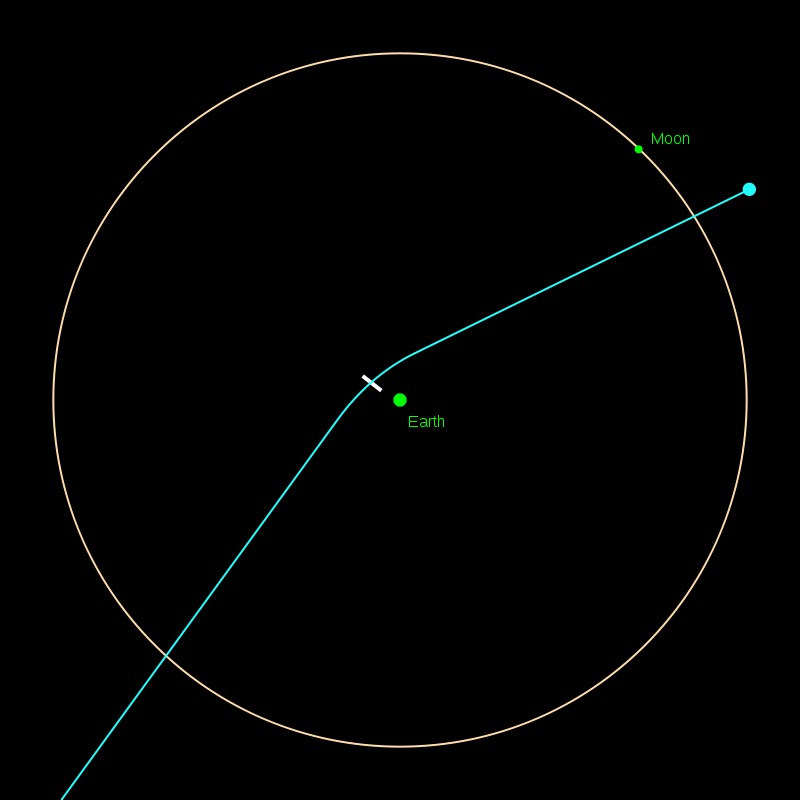The list of objects posing a potential threat to Earth is quite short, but the asteroid Apophis is one of them. Recent follow-up analyzes indeed suggest that the object could still strike the Earth in 48 years. But that would be really bad luck.
On April 13, 2029, we know that an asteroid 340 meters wide will harmlessly "skip" the Earth, placing itself at a distance of approximately 31,000 km . Astronomically, it is still very close. For comparison, the Moon is moving about 384,000 km from our planet. This asteroid is Apophis (God of chaos).
Such cosmic "flirt" is very rare. Naturally, researchers intend to take advantage of this. “The approach of Apophis in 2029 will be an incredible opportunity for science “, Marina Brozovi, of NASA’s Jet Propulsion Laboratory (JPL) in Pasadena, California, recently said. “We will observe the asteroid with optical telescopes and radar. With these observations, we may be able to see surface detail as small as a few meters “.
On the trajectory side, note that on the day of the approach, the asteroid will be visible to the naked eye from Australia in the morning. It will then cross the Indian Ocean and then pass over Africa. It will then cross the Atlantic in an hour before reaching the west coast of the United States. That said, it is not this meeting that interests us today.
Recent observations made earlier this year by the Subaru telescope (Hawaii) have indeed allowed astronomers to better understand how the Yarkovsky effect influences the orbital trajectory of the planet. object in order to estimate its potential danger not for 2029, but for the year 2068 , when the object returns to Earth.

What is the Yarkovsky effect? During a revolution around the Sun, one side of an asteroid receives more light (photons) than the other. Then the same thing happens with the other side, since the body is rotating. We then observe temperature differences on the surface of the body, while each "side" receives photons in turn. This then causes a change in the motion of the object. These changes are very small, to be sure, but they accumulate over millions of years. Therefore, when one of these objects seems to titillate the Earth, this effect must be considered.
“Ignoring Yarkovsky's Drift, Apophis is still a threatening object, but not in 2068 “Summarizes Dave Tholen, a researcher at the Institute of Astronomy at the University of Hawaii. “With the Yarkovsky effect taken into account, the 2068 impact scenario is on the other hand still in play. The chances are slim, but they are above zero “.
Concretely, by reanalyzing this data, the researchers calculated that, to date, the chances of this asteroid hitting Earth on April 13, 2068 are 1 in 530 000 . These estimates will be regularly updated as we observe the behavior of the object. And for good reason, a collision with the Earth as improbable as it is could cause significant damage, releasing the equivalent of 1,151 megatons of TNT.
For information, Apophis currently ranks third on NASA's Sentry risk table. The two near-Earth objects ahead of it are asteroid 29075 (1950 DA) and asteroid Bennu (which has just received a visit). The first one has 1 chance in 8,300 (0.012%) of touching the Earth in 2880 , while Bennu has a 1 in 2700 chance (0.037%) to hit us between the years 2175 and 2199 .